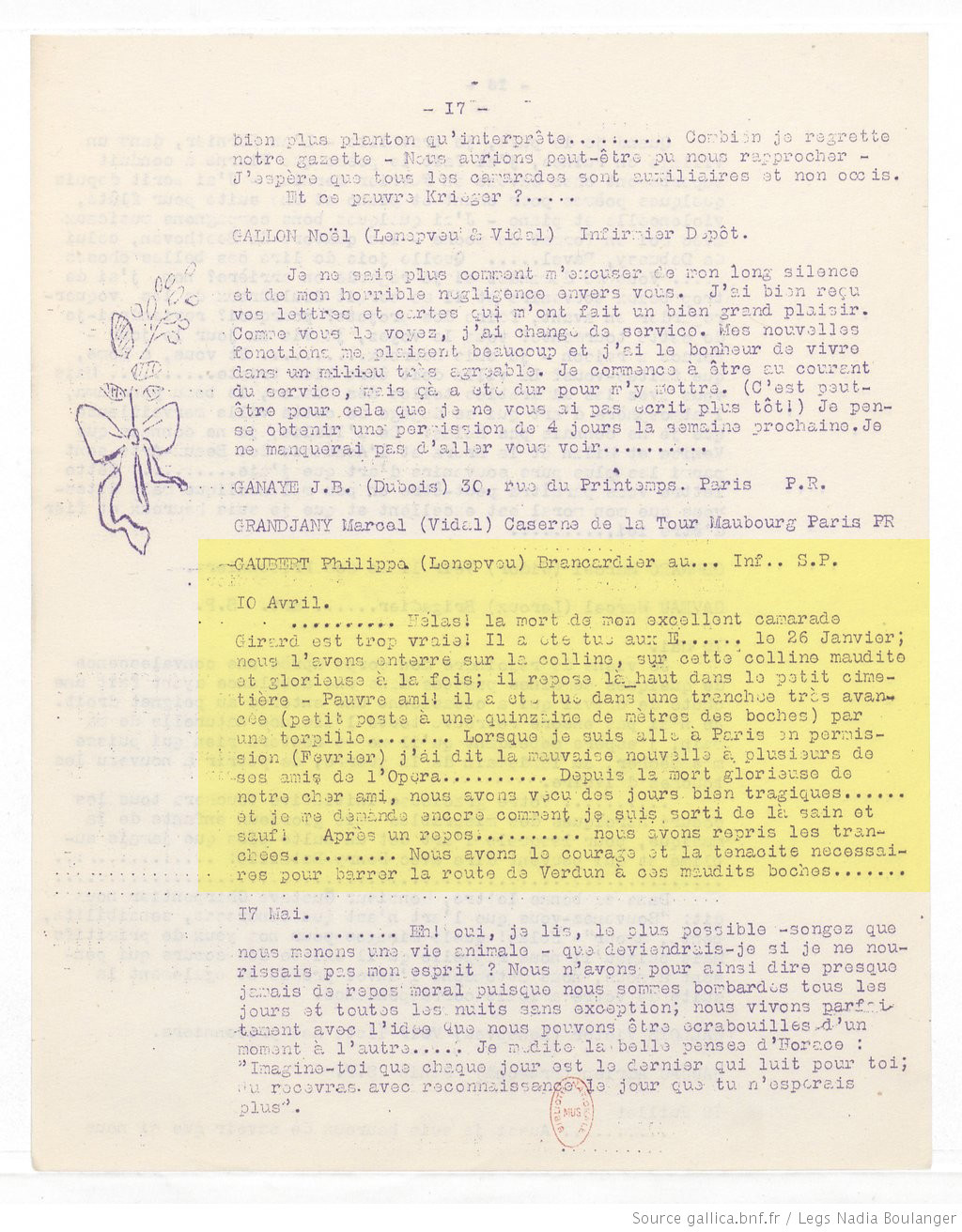Paris-Manchester 1918
Conservatoires in time of war
Burying friends
Though ever-present at the front, death never becomes a trivial event for soldiers. It is always traumatic and continues to be accompanied by rituals: the stretcher-bearers were responsible for recovering the bodies so that they could be identified and buried. In addition to serving the school gazette’s purpose of providing information, the account of a friend’s death made it possible to keep his memory alive and thus to attempt to assign a meaning (often a heroic one) to his death.
Transcription
GAUBERT Philippe (Lenepveu), stretcher-bearer in the. . . Inf[antry][1]
10 April.[2]
. . . . . . . . . . . . . . . Unfortunately, news of the death of my great friend Girard[3] is all too true! He was killed at É[4] . . . . . . there he lies in the little cemetery – my poor friend! He was killed by a shell in one of the trenches furthest forward (a small post about 50 feet from the Huns). . . . . . . . When I went to Paris on leave (in February) I gave the bad news to some of his friends from the Opéra . . . . . . . . . . Since the glorious death of our dear friend, we have lived through some very tragic days . . . . . . . . . . and I wonder how I came through all that unscathed! After a rest break . . . . . . . . . . . . . . . we went back into the trenches . . . . . . . . . . . We have the courage and the determination needed to block the road to Verdun for those damned Huns . . . . . .
[1]Infantry.
[2]1916.
[3]Marcel Girard (1891-† 1916), first medal for music theory in 1907.
[4]Les Éparges is a ridge in the Meuse department that was the scene of intense fighting, especially from February to April 1915 (battle of Éparges)
Source
Philippe Gaubert, (10 April 1916) Letter to the Franco-American Committee, in: Gazette des classes du Conservatoire, No. 3, Paris, October 1916, Bibliothèque nationale de France, Music Department, Rés Vm Dos 88 (1), p. 17 [on line].
Document description: mimeographed document in violet ink, 21×27 cm.




